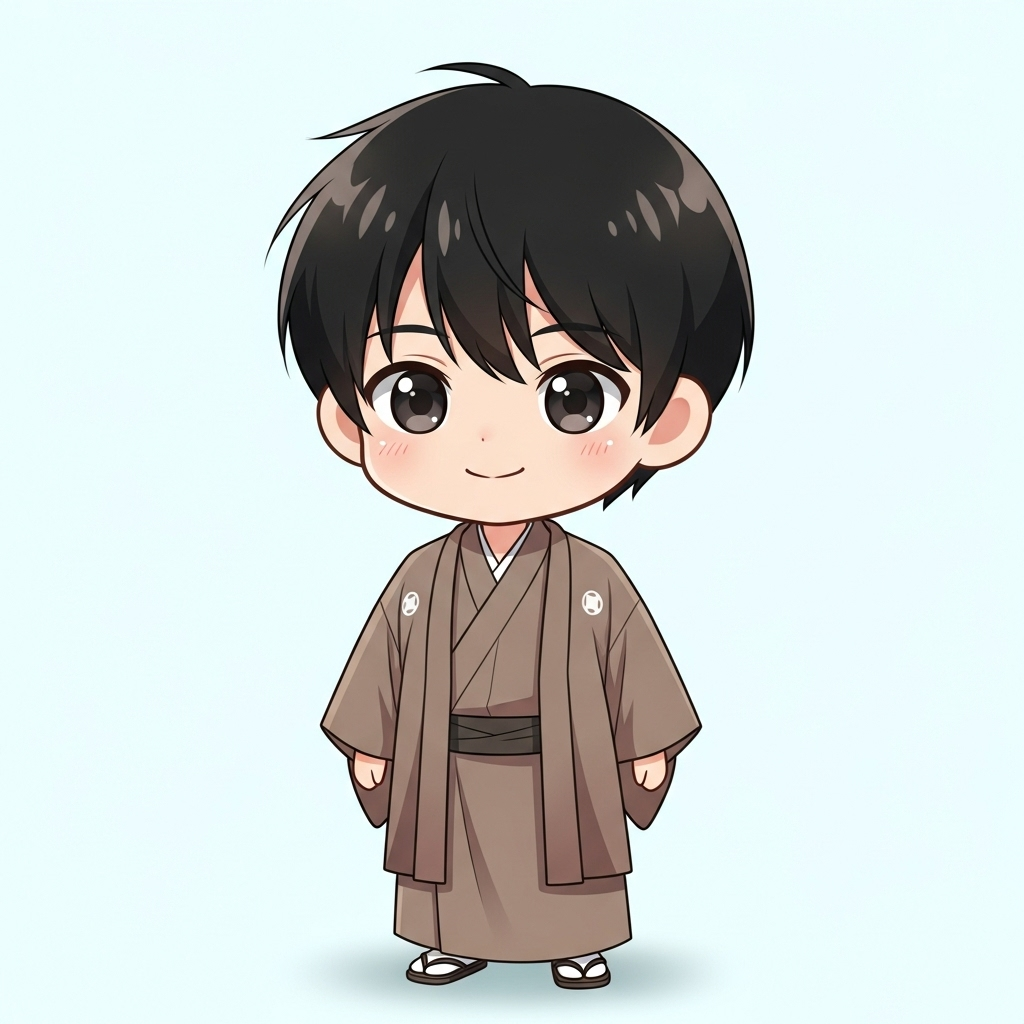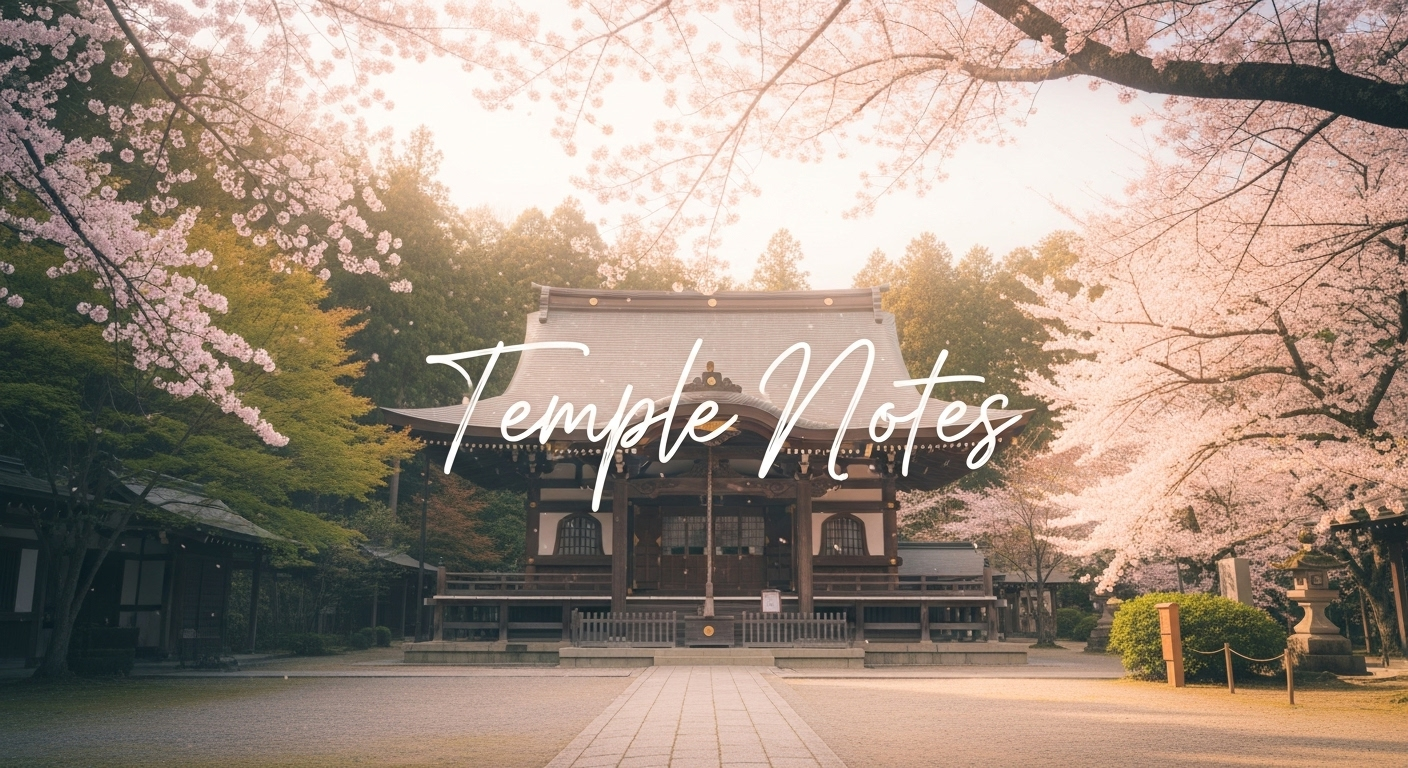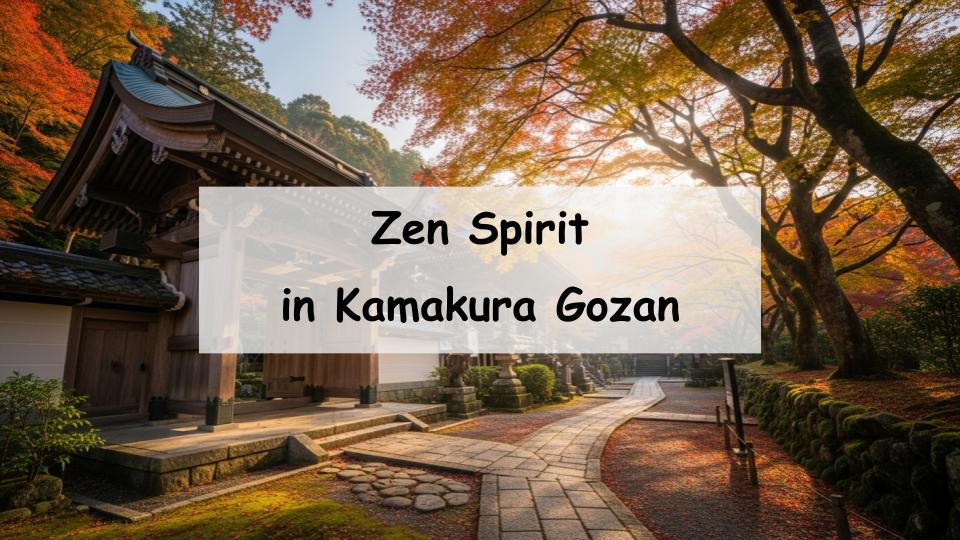When visiting Kamakura, you’ll notice a great number of temples scattered throughout the city. But what exactly does “Kamakura Gozan” refer to? Surprisingly, many people are unfamiliar with the term, even those who enjoy temple visits.
What does “Gozan” mean? Which temples are included? Why were they ranked in the first place?
In this article, we’ll explore the origins of the Kamakura Gozan, the characteristics of the five selected temples, and the reasons behind their historical ranking.
By understanding the cultural and historical significance of the Kamakura Gozan, your journey through Kamakura will become a deeper and more meaningful experience.
- What Is Kamakura Gozan? Meaning and Historical Background
- The Five Temples of Kamakura Gozan and Why They Were Chosen
- 1st Rank: Kencho-ji – The Center of Zen Buddhism in Japan
- 2nd Rank: Engaku-ji – A Symbol of Kamakura’s Spirit and Culture
- 3rd Rank: Jufuku-ji – A Temple Deeply Connected to the Genji Clan
- 4th Rank: Jochi-ji – A Tranquil Temple in Harmony with Nature
- 5th Rank: Jomyo-ji – A Refined and Elegant Zen Temple
- Why Were These Five Temples Chosen? The Criteria Behind the Ranking
- The Charm of Touring the Kamakura Gozan and How to Visit
- Common Questions and Misconceptions About Kamakura Gozan
- Conclusion: Discover the Timeless Appeal of the Kamakura Gozan
- A Message from the Guide
What Is Kamakura Gozan? Meaning and Historical Background
What Does “Gozan” Mean?
“Gozan” literally means “Five Mountains” and refers to a hierarchical system used in Zen Buddhism to rank temples. This tradition originated in China during the Song Dynasty and was later adopted in Japan. The system designated the most prominent temples in terms of their spiritual, educational, and political influence.
In Japan, two major sets of Gozan were established—one in Kyoto and the other in Kamakura—both holding immense religious and cultural significance.
The Historical Background and Significance of Kamakura Gozan
The Kamakura Gozan system was established during the late Kamakura period and solidified in the early Muromachi period. As Zen Buddhism gained favor under the warrior class, key temples were supported by the ruling authorities and designated as important centers of learning and governance.
By ranking the temples, the Kamakura shogunate aimed to structure and control religious institutions, reflecting their power and influence through the promotion of Zen ideology.
The Connection Between the Muromachi Shogunate and Kamakura Gozan
While Kamakura Gozan originated during the Kamakura shogunate, it was the Muromachi shogunate under Ashikaga Yoshimitsu that formally established the ranking system. He systematized both the Kyoto and Kamakura Gozan to reinforce Zen as a pillar of national policy. Temples were not only religious centers but also hubs for diplomacy, education, and cultural development.
The Five Temples of Kamakura Gozan and Why They Were Chosen
1st Rank: Kencho-ji – The Center of Zen Buddhism in Japan
Founded in 1253, Kencho-ji is considered the first purely Zen temple in Japan. It was established by the Chinese Zen master Rankei Doryu with support from the Kamakura shogunate. The temple played a key role in training monks and spreading Zen teachings, which is why it was placed at the top of the Kamakura Gozan hierarchy.
2nd Rank: Engaku-ji – A Symbol of Kamakura’s Spirit and Culture
Engaku-ji was founded in 1282 by Hojo Tokimune to honor those who died during the Mongol invasions. Its founding priest was Mugaku Sogen, and the temple reflects a deep blend of Zen philosophy and samurai values. It is known for its cultural assets and serene atmosphere, making it second only to Kencho-ji in importance.
3rd Rank: Jufuku-ji – A Temple Deeply Connected to the Genji Clan
Jufuku-ji was founded by Hojo Masako, the wife of Minamoto no Yoritomo, the founder of the Kamakura shogunate. The graves of Masako and her son Sanetomo are located here, highlighting its close ties to political power in the Kamakura period. Its historical significance places it third among the Gozan.
4th Rank: Jochi-ji – A Tranquil Temple in Harmony with Nature
Built in 1281, Jochi-ji is known for its peaceful and natural setting. Unlike the grand scale of Kencho-ji or Engaku-ji, Jochi-ji offers a quiet, contemplative space that embodies the spirit of Zen. Its commitment to preserving traditional Zen practices earned it the fourth place in the ranking.
5th Rank: Jomyo-ji – A Refined and Elegant Zen Temple
Founded in the early Kamakura period, Jomyo-ji once had extensive temple grounds with multiple buildings. Though it has become smaller over time, the temple still retains its refined beauty, with well-kept gardens and a traditional tea house. Its elegance and legacy place it as the fifth temple of the Kamakura Gozan.
Why Were These Five Temples Chosen? The Criteria Behind the Ranking
The Kamakura Gozan temples were selected based on multiple factors: their founding patrons, historical and political significance, contributions to education and Zen teachings, and their connection to the ruling authorities. Especially Kencho-ji and Engaku-ji, which served as major centers for monk training and cultural exchange. The Gozan system reflected both religious importance and political strategy.
The Charm of Touring the Kamakura Gozan and How to Visit
Recommended Route to Visit the Kamakura Gozan
The best way to explore the Kamakura Gozan is by starting at Kita-Kamakura Station. From there, visit Engaku-ji, then walk to Jochi-ji. Head south to Kencho-ji, continue on to Jufuku-ji, and end at Jomyo-ji. All temples are within walking distance, making it an ideal route for a half-day to full-day cultural walk.
Seasonal Scenery and Highlights
Each temple in the Kamakura Gozan offers unique scenery throughout the seasons. Cherry blossoms in spring, lush green in summer, vibrant autumn foliage, and a serene winter atmosphere—all enrich the spiritual and visual experience of visiting these sacred sites.
Zen Experiences to Calm the Mind
Many of the Kamakura Gozan temples offer Zen experiences such as zazen (seated meditation) and shakyo (sutra copying). These activities provide a chance not just to observe Zen but to personally engage with it. They can help you pause, reflect, and reconnect with yourself in a meaningful way.
Common Questions and Misconceptions About Kamakura Gozan
How Is It Different from Kyoto’s Gozan?
While both Kyoto and Kamakura have Gozan systems, they differ in their origins and political context. Kyoto was the imperial capital and cultural heart of Japan, whereas Kamakura was the seat of the warrior government. The two Gozan systems existed in parallel but served different political and religious purposes.
Are There Other Famous Temples Besides the Gozan?
Yes. Kamakura is home to many well-known temples like Hase-dera, Meigetsu-in, and Tsurugaoka Hachimangu. However, these are not part of the Gozan system and often belong to different sects or serve different roles in the city’s religious landscape.
Does the Gozan Ranking Still Matter Today?
Today, the Gozan ranking no longer functions as a religious hierarchy. However, the cultural and historical significance of these temples remains strong. The Kamakura Gozan are preserved as important cultural properties and continue to attract visitors and practitioners from around the world.
Conclusion: Discover the Timeless Appeal of the Kamakura Gozan
Walk Through Kamakura with a Sense of History and Prestige
The Kamakura Gozan are more than just historic buildings—they are living witnesses of Japan’s religious, political, and cultural evolution. Walking through these temples allows you to feel the layered history and spiritual depth of Kamakura.
How Understanding the Kamakura Gozan Enhances Your Temple Tour
By learning about the Kamakura Gozan, your visit to Kamakura becomes much more than a casual sightseeing trip. Each temple tells a story, not just of Zen, but of the people, values, and events that shaped Japan. Understanding this enriches your experience and opens the door to deeper cultural appreciation.
A Message from the Guide

Historic Zen temples are very calming places.














Comment